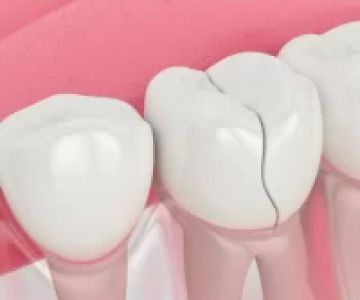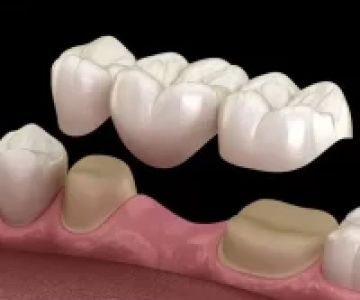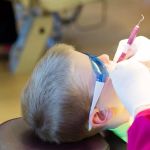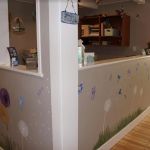How Do Dental Appliances Help with Sleep Apnea?
- 1. Understanding Sleep Apnea
- 2. How Dental Appliances Work
- 3. Benefits of Using Dental Appliances for Sleep Apnea
- 4. Different Types of Dental Appliances
- 5. How to Get a Dental Appliance for Sleep Apnea
1. Understanding Sleep Apnea
Sleep apnea is a sleep disorder that causes pauses in breathing or shallow breaths while sleeping. These disruptions can happen hundreds of times a night, leading to poor sleep quality, daytime fatigue, and increased health risks. One of the most common types of sleep apnea is obstructive sleep apnea (OSA), which occurs when the muscles in the throat relax excessively, blocking airflow. Although CPAP (Continuous Positive Airway Pressure) machines are commonly used to treat sleep apnea, dental appliances have become an increasingly popular alternative, especially for those who cannot tolerate CPAP therapy.
2. How Dental Appliances Work
Dental appliances, also known as mandibular advancement devices (MADs), are designed to treat sleep apnea by repositioning the lower jaw and tongue to keep the airway open during sleep. These devices are typically custom-fitted by a dentist to ensure maximum comfort and effectiveness. By advancing the jaw slightly forward, dental appliances reduce airway obstruction and prevent snoring and apnea episodes. Unlike CPAP machines, which require a mask and hose, dental appliances are compact and easy to use, making them a more comfortable option for many sleep apnea sufferers.
3. Benefits of Using Dental Appliances for Sleep Apnea
Dental appliances offer several advantages for individuals with sleep apnea, making them a viable treatment option for those seeking alternatives to CPAP therapy:
- Improved Comfort: Unlike CPAP masks, dental appliances are comfortable, portable, and easy to use. Many users find them less intrusive, especially for those who feel claustrophobic with a CPAP mask.
- Non-Invasive: Dental appliances are non-invasive compared to surgical options for sleep apnea, providing a safer alternative for those who prefer not to undergo surgery.
- Effective for Mild to Moderate Sleep Apnea: Studies show that dental appliances can be as effective as CPAP for treating mild to moderate cases of sleep apnea, helping users achieve better sleep quality and reducing daytime fatigue.
- Portable: Dental appliances are small, lightweight, and travel-friendly, making them ideal for individuals who travel frequently or need a discreet treatment option.
For many people, dental appliances provide a more convenient and comfortable solution for managing sleep apnea, allowing for better sleep and overall health improvement.
4. Different Types of Dental Appliances
There are various types of dental appliances designed to treat sleep apnea, each offering different features to meet individual needs. The most common types include:
- Mandibular Advancement Devices (MADs): These devices reposition the lower jaw forward to prevent airway collapse. They are the most widely used dental appliance for treating sleep apnea.
- Tongue Retaining Devices (TRDs): These devices hold the tongue in a forward position to prevent it from blocking the airway. They are typically recommended for individuals who cannot tolerate MADs.
- Hybrid Devices: Some devices combine features of MADs and TRDs, providing additional support for both the jaw and the tongue to open the airway effectively.
Your dentist will help determine which type of dental appliance is best suited for your condition based on the severity of your sleep apnea and your specific needs.
5. How to Get a Dental Appliance for Sleep Apnea
If you suspect that you have sleep apnea and are considering dental appliances as a treatment option, it’s important to consult with a dentist who specializes in sleep medicine. The process typically involves the following steps:
- Consultation: During your initial consultation, the dentist will assess your condition by reviewing your medical history and performing an examination to determine if dental appliances are a suitable treatment for you.
- Custom Fitting: If dental appliances are appropriate for your condition, the dentist will take impressions of your teeth and create a custom-fitted device tailored to your mouth. Proper fitting ensures that the appliance will be comfortable and effective.
- Follow-Up Care: After receiving your dental appliance, regular follow-up visits will be necessary to ensure the device is working effectively and to make any adjustments for optimal comfort and performance.
By working closely with your dentist, you can find the best solution for your sleep apnea and start experiencing the benefits of better sleep.
If you’re struggling with sleep apnea and are looking for an alternative treatment to CPAP, dental appliances could be the solution for you. Visit Dentistry Toothtruth to learn more about dental appliances and schedule a consultation to see how they can help you get a better night’s sleep.







 All Seacoast Dental and Associates3.0 (38 review)
All Seacoast Dental and Associates3.0 (38 review) Smile Academy Pediatric Dentistry4.0 (48 review)
Smile Academy Pediatric Dentistry4.0 (48 review) Kansas City Dental Implants & Oral Surgery4.0 (229 review)
Kansas City Dental Implants & Oral Surgery4.0 (229 review) South Pasadena Dental Group - General Dentist & Cosmetic Dentistry South Pasdena4.0 (76 review)
South Pasadena Dental Group - General Dentist & Cosmetic Dentistry South Pasdena4.0 (76 review) Children's Dental Specialists & Adult Dentistry - Chester5.0 (37 review)
Children's Dental Specialists & Adult Dentistry - Chester5.0 (37 review) First Class Dental PA5.0 (248 review)
First Class Dental PA5.0 (248 review) The Importance of Oral Health Education During Pregnancy for a Healthy Pregnancy
The Importance of Oral Health Education During Pregnancy for a Healthy Pregnancy Best Tips for Brushing Your Teeth Properly for Healthy Gums: Essential Techniques for Oral Health
Best Tips for Brushing Your Teeth Properly for Healthy Gums: Essential Techniques for Oral Health Why Skipping Dental Checkups Can Lead to Bigger Oral Health Problems
Why Skipping Dental Checkups Can Lead to Bigger Oral Health Problems Advantages of Porcelain Dental Restorations
Advantages of Porcelain Dental Restorations How Can Diabetes Cause Tooth and Gum Problems? Preventing and Managing Oral Health Issues
How Can Diabetes Cause Tooth and Gum Problems? Preventing and Managing Oral Health Issues Healthy Habits for Promoting Good Oral Health and Hygiene: Tips for a Healthy Smile
Healthy Habits for Promoting Good Oral Health and Hygiene: Tips for a Healthy Smile